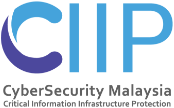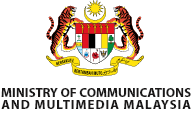By | Sharifah Nurul Asyikin Binti Syed Abdullah, Ts. Tajul Josalmin Bin Tajul Ariffin, Mohd Izuan Effenddy Bin Yusof, Akmal Suriani Binti Mohamed Rakof & Fakhrul Afiq Bin Abd Aziz
Introduction
Emerging technologies and the 4th Industrial Revolution (IR 4.0) has brought about significant changes to almost all aspects of humanity. The world is fast moving towards digitalization and people are now more connected than ever. With the advancements in technologies and high speed access of data being stored in the cloud, information protection has become one of the rising concerns amongst the public.
Of late, there has been a spike in interest in creating safe environments through the introduction of Cyber-Physical Systems (CPS), a sub-component of IR 4.0. This has led to the proliferation of closed-circuit television (CCTV) systems in the public as well as private spaces. This article intends to describe and compare guidelines from developed nations on the installation and usage of CCTV systems for users and vendors. The countries under review are the United States of America, United Kingdom, Australia and New Zealand. This comparative overview of guidelines could assist practitioners and scholars who are interested in CCTV or for civil servants when applying such guidelines in Malaysia.
2. Comparative Overview Of The Guidelines
The guidelines of the four (4) countries used in this comparative study are publicly accessible via the countries’ official website. This article focuses on certain aspects of the guidelines i.e. the specifications of the CCTV, the proposed recommendations on camera placement and also management and monitoring of the CCTV.
2.1 CCTV Management and Monitoring
Table 1.0: Different aspects of management and monitoring of CCTV.
From Table 1.0 above, the United States of America (USA) has clearly specified that CCTVs should be used for law enforcement purposes only. The United Kingdom (UK) also emphasizes the importance of CCTV recordings as evidential value to support public safety and law enforcement. However, Australia and New Zealand do not consider this aspect of CCTV recordings in their guideline.
2.2 CCTV Specifications
Table 2.0: CCTV Specifications from Australia and New Zealand, United Kingdom, and United States of America
The analysis of CCTV specifications from the four (4) countries featured in this article shows that Australia and New Zealand are more specific in camera resolution requirements, while UK and USA only require general camera specifications but emphasize end objectives as criteria.
2.3 CCTV Installation Recommendations
Table 3.0: CCTV Installation Recommendations from Australia and New Zealand, United Kingdom, and United States of America
2.4 Camera Placement Recommendations for CCTV
Table 4.0: Camera Placement Recommendations from Australia and New Zealand, United Kingdom, and United States of America
3.0 CCTV Recommendation And Guidelines In Malaysia
Generally, the comparative studies portray two generic approaches in the deployment and implementation of public video surveillance systems and services by UK and New Zealand. The surveillance systems are either deployed solely by the local government authorities or in joint partnership between a local government authority and private security service providers.
In Malaysia, Malaysian Communications and Multimedia Commission (MCMC) has published a report entitled, “Video Surveillance in Public Spaces”. According to MCMC, the public spaces that require installation of CCTV should be clearly defined prior to determining the installation methodology. MCMC defines public spaces as any place that an individual has the right to access and use as opposed to private space which may have restrictions.
The suitable video surveillance systems in public spaces environment excerpted from the article:
4. Conclusion
There are mixed approaches to the management of public video surveillance systems and service deployment in Malaysia. In countries such as UK, Australia, New Zealand and the US, public video surveillance is mostly funded by the state government, local city councils or municipal councils. Specific recommendations and guidelines on the technical aspects of CCTV installation have not been issued in Malaysia.
Most local government authorities outsource the entire CCTV deployment work to an external private security party through a contract agreement or joint partnership in leasing, installing and maintaining the systems and equipment. As such, recommendations and installation guidelines are tailored specifically for each project.
References
- “Video Surveillance in Public Spaces”, Suruhanjaya Komunikasi dan Multimedia (SKMM). (2008).
- Australia and New Zealand police recommendations for CCTV systems. (2014). Docklands, Victoria: ANZPAA.
- Dowling, Christopher & Morgan, Anthony & Gannoni, Alexandra & Jorna, Penny. (2019). How do police use CCTV footage in criminal investigations? Trends and Issues in Crime and Criminal Justice. 575. Retrieved July 26, 2020, from https://www.researchgate. net/publication/332224368 _How_do_ police_use_CCTV_footage_in_criminal_ investigations
- EESAG. (2014). Australia and New Zealand police recommendations for CCTV systems. Retrieved July 26, 2020, from https://nla. gov.au/nla.obj-275378245/view
- Garris, M. D., Laamanen, M. T., Russell, C. S., & Nadel, L. D. (2017). Assessment of closed- circuit television digital video recording and export technologies. doi:10.6028/nist. ir.8172
- Ratcliffe, Jerry. (2010). Video Surveillance of Public Places. Retrieved July 25, 2020, from https://www.researchgate. net/publication/252218884_Video_ Surveillance_of_Public_Places
- Space and Naval Warfare Systems Center Atlantic (2013). System Assessment and Validation for Emergency Responder. CCTV Technology Handbook. Retrieved July 26,2020 from https://www.dhs.gov/ sites/default/files/publications/CCTV-Tech- HBK_0713-508.pdf
- Surveillance camera code of practice. (2013). London: Home Office. Retrieved July 25, 2020, from https://assets.publishing.service. gov.uk/ government/ uploads/ system/ uploads/attachment_data/file/282774/ SurveillanceCameraCodePractice.pdf







